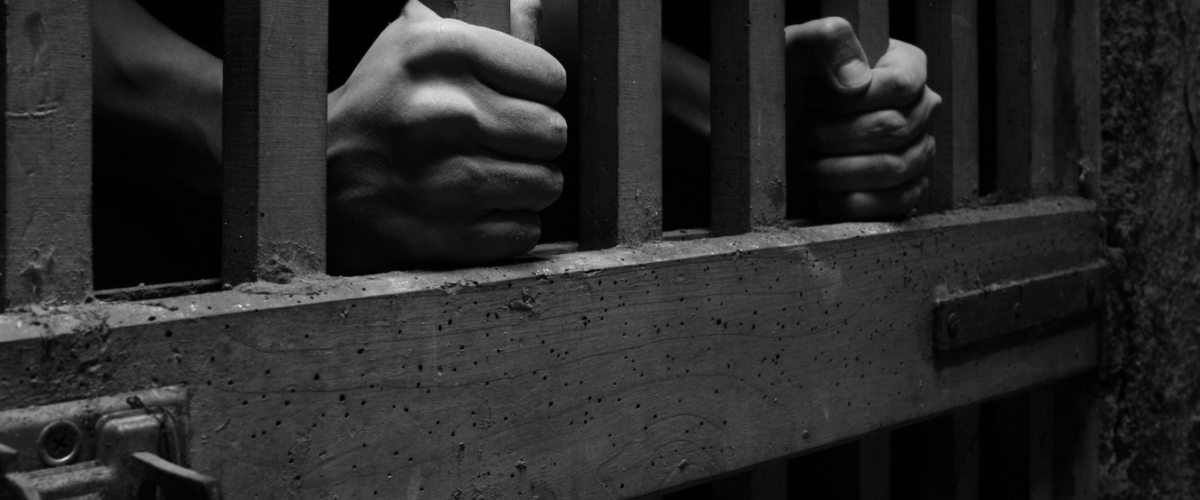This series analyses the changes proposed by the Criminal Law Bills in 2023. This article was first published as part of Project 39A’s Bharatiya Nagarik Suraksha Sanhita Bill, 2023 and Bharatiya Sakshya Bill, 2023: A Substantive Analysis, a complete version of which can be accessed here.
This post examines changes to procedures for the arrest and medical examination of an accused under the Bharatiya Nagarik Suraksha Sanhita Bill, 2023.
Cls.35 to 62 BNSS (Chapter V) deal with the procedure for the arrest of persons suspected to have committed an offence. Although much of the chapter retains arrest procedures prescribed under Chapter V of the CrPC, changes which may be of significance include additions to Cl.35 (when police may arrest without warrant), Cl.37 (designated police officer), Cl.43 (arrest how made), Cls.51 and 52 (medical examination of the arrestee at the request of a police officer) and Cl.53 (medical examination of an arrestee). The list below describes all the changes brought in by the BNSS to provisions relating to arrest and medical examination of the accused. This piece, however, delves only into those changes that may have the most significant implications.
- Cl.35(7): Inserts an additional requirement that a police officer cannot arrest without prior permission of an officer not below the rank of Deputy Superintendent of Police where the offence is punishable with imprisonment below three years and where the accused is infirm or above sixty years of age.
- Cl.36(c): Inserts additional category of persons [‘any other person’] whom the arrestee has the right to inform regarding their arrest. Presently, the CrPC makes provision for intimation of arrest to only a relative or friend of the accused.
- Cl.37(b): Inserts additional obligation on the State government to designate a police officer who would be responsible for maintaining information regarding all arrests and arrestees. This sub-clause also requires such information to be displayed prominently in every police station and at the district headquarters.
- Cl.40(1): Inserts an obligation requiring private persons who arrest to turn over the arrestee to a police officer or police station, without unnecessary delay, but within six hours of arrest. Presently, the CrPC only uses the phrase ‘without unnecessary delay’.
- Proviso to Cl.43(1): Adds a phrase (to the existing proviso on arrest of a woman) that in the arrest of a female, the details of such arrest must be given to her relatives, friends or such other persons as disclosed or mentioned by her.
- Cl.43(3): The clause, a new addition to s.46 CrPC, empowers the police to use handcuffs for habitual, repeat offenders who have escaped from custody and who have committed a variety of bodily, social and economic offences listed therein.
- Cl.48(1): Inserts obligation on persons making an arrest to provide information of such arrest and place of arrest to the police officer designated in the district, as provided under Cl.37(b).
- Cl.48(3): Inserts a phrase enabling the State government to frame rules as to the manner in which entries of arrests may be recorded within the police station.
- Cls.51 and 52: Enable any police officer to seek the medical examination of the arrestee for purposes of investigation and collection of bodily samples, by replacing the phrase ‘police officer not below the rank of a sub-Inspector’, under the existing ss.53 and 53A CrPC, with ‘any police officer’.
- Cl.53: Inserts a proviso, enabling a medical practitioner conducting the medical examination of an arrested person, to conduct one more examination if such practitioner deems it fit.
- Cl.58: Inserts a phrase to the effect that an arrestee may be produced before a Magistrate, within the first 24 hours of arrest, even if such Magistrate does not have jurisdiction.
I. Obligation of the Police to inform about the Arrest to a Friend or Relative
S.50A(1) CrPC places an obligation upon the police to inform the arrestee’s friend, relative or any other person disclosed or nominated by the arrestee on the details of such arrest. This provision, recast in the BNSS in Cl.48(1), replaces the word ‘nominated by the arrested person’ with ‘mentioned by the arrested person’. By replacing the word ‘nominated’ with ‘mentioned’, Cl.48(1) possibly indicates a shift in the autonomy granted to the arrestee. While ‘nominated’ in the CrPC enables an accused’s choice to some extent, ‘mentioned’ can cover a wide range of persons, regardless of the arrestee’s choice or interest in having such person informed.[1] Thus, the BNSS clause may water down whatever emphasis existed on the accused’s choice of person, potentially weakening the scope of this safeguard further.
Similarly, the proviso to Cl.43(1) BNSS, which prevents a police officer from touching a woman during her arrest, unless such police officer is female, additionally specifies the requirement to inform the female arrestee’s relative, friend or such other person as disclosed or ‘mentioned by her’, about the arrest. This addition merely reiterates the general obligation upon the police to inform a relative, friend or any other person about the details of arrest, found both under Cl.48(1) BNSS and in s.50A(1) CrPC.
II. Use of Handcuffs during Arrest
Cl.43(3) BNSS introduces discretionary powers for the police to use handcuffs, keeping in mind the ‘nature and gravity of offence’ upon arrest if the following conditions are met: i) where the offender is a habitual, repeat offender; ii) the person has escaped from custody; and iii) has committed offences including organised crime, terrorist acts, drug related crime, sexual offences, murder, acid attack, human trafficking, offences against the State, illegal possession of arms and ammunition, or economic offences amongst others. Such provisions pertaining to handcuffs, are currently existing in several state prison manuals.[2] The BNSS introduces these handcuffing powers as a statutory power. However, Cl.43(3) BNSS falls short of well settled constitutional thresholds, established to protect a person’s right to dignity under Art.21, that must be met for the exercise of handcuffing powers.
Handcuffs and other iron fetters to bind arrestees and prisoners have been found prima facie unconstitutional for its arbitrariness and degrading impact on human dignity.[3] Recognising these implications, the Supreme Court (through Sunil Batra[4] and Prem Shankar Shukla[5]) sets an extremely high threshold for the use of handcuffing powers, including during arrest. The exercise of such powers must meet the following criteria: i) the prisoner has a ‘credible tendency for violence’,[6] ii) used on a person only for a short spell of time,[7] iii) grounds for using such fetters are to be recorded in a journal, and communicated both to victims and the arrestee[8] and iv) the use of such handcuffs are subjected to quasi judicial oversight, and any extended use of the same will need the approval of a judge.[9] Significantly, the Court in both decisions also held that the mere risk of escape alone does not warrant handcuffs. Instead, the police and the State have the obligation to use less restrictive measures to prevent such escape before turning to handcuffs as a last resort.[10] Taking this further, the Court in Citizens for Democracy[11] placed onus on the police or prison officials to undertake an individualised assessment for the need to use handcuffs.
However, Cl.43(3) enables a police officer to use handcuffs for a wide range of offences, without incorporating the constitutional requirement of the tendency to commit violence upon escape. The few qualifiers present in Cl.43(3) are of wide import. Firstly, the clause requires a police officer to keep in mind the ‘nature and gravity of the offence’. The phrase is vague; it is unclear whether this simply alludes to the kind of offence (for example, it may apply to arrestees in murder cases but not theft) or whether it also requires consideration of other crime related details such as the manner of commission (its brutality etc.). This can be a subjective determination, and does not meaningfully guide the officer’s discretion. Crucial considerations including the use of alternative means (to restrict a person, prevent their escape, or reduce propensity to cause harm before resorting to handcuffs) and the parameters to undertake individualised assessments for the use of handcuffs are conspicuously absent.
In the context of constitutional requirements for handcuffing, the nexus between some offences, such as economic offences, counterfeiting of coins and currency notes, and the need to use handcuffs remains unclear. In sum, Cl.43(3) provides no qualifiers to ensure that the use of handcuffs meet the threshold to ascertain a ‘credible tendency for violence’. The only other restriction on this power may be Cl.46 BNSS, which lays out that arrested persons cannot be subjected to more restraint than necessary, which is identical to s.49 CrPC.
Another significant gap is the lack of clarification regarding the meaning of the phrase ‘habitual, repeat offender’. The term ‘habitual offender’ has a distinct connotation from the phrase ‘repeat offender’. Habitual offenders may refer to the terminology used under various state legislations pertaining to ‘habitual offenders’.[12] While some states have defined ‘habitual offender’ as any person convicted and sentenced to imprisonment at least three times in five years for certain bodily and economic offences, other states have fewer requirements (for instance, some states do not require prior convictions within a five year period).[13] On the other hand, there is no pre-existing legislative definition or prior conceptualisation of the term ‘repeat offender’[14] and the term could possibly refer to anyone who has committed more than one offence.
The BNSS clause does not clarify whether ‘habitual’ and ‘repeat’ are taken to have the same meaning, or whether it alludes to two distinct concepts. Cl.43(3) also does not clarify whether handcuffs can be used only where the offence in question is one that an arrestee is habitually and repeatedly accused of. Furthermore, it is unclear whether the metric for assessing habitual or repeat offences are prior convictions, arrests or charge sheets.
III. Medical Examination of the Accused at the request of a Police Officer
Cls.51 and 52 BNSS, pertaining to the medical examination of an accused for the purposes of investigation, recast ss.53 and 53A CrPC. S.53(1) CrPC enables a police officer not below the rank of Sub-Inspector to direct a medical practitioner to conduct the arrestee’s medical examination if the officer has reasonable grounds to believe that such examination will produce evidence linked to the offence. S.53A CrPC extends this power in the context of persons accused of rape, with the provision allowing both Government medical practitioners and other practitioners within 16 kms of such custody to conduct the examination. The explanation of the section makes it clear that the practitioner may collect a variety of bodily fluids and samples, including DNA profiling, blood, sweat, hair samples etc.[15] However, Cls.51 and 52 BNSS replace the phrase ‘police officer not below the rank of sub-inspector’ by ‘any police officer’. Further, by way of an addition, sub-clause (3) of Cl.51 mandates the medical practitioner to forward the examination report without delay to such police officer.
Enabling any police officer to request such an examination removes the safeguard present in the CrPC (requiring a police officer who was qualified to be a Sub-Inspector), and widens the range of officers who can request and collect such samples. Pertinently, the power exercisable by these provisions extends to the accused’s body, and involves furnishing such evidence which are of a highly sensitive and private nature. It is important to note here that samples collected under this provision will be used during forensic examinations. Widening the scope to ‘any police officer’ creates greater risk of improper collection of samples by junior officers who may not have the required skills, training or experience. Given the intimate nature of the samples and their use for forensic analysis, this may adversely affect an accused’s right to a fair trial and right to privacy. It may be noted that this modification replicates the position under the CPIA.[16]
IV. Medical Examination of the Accused at the Time of Arrest
S.54 CrPC (which mandates the medical examination of an arrestee soon after arrest) is retained in Cl.53 BNSS with an additional proviso inserted. Unlike ss.53 and 53A, the medical examination stipulated under s.54 CrPC acts as a safeguard for the arrestee, who is required to be medically examined for any signs of custodial violence, torture or ill treatment during confinement in custody. The additional proviso introduced in Cl.53 BNSS enables the medical practitioner to conduct one more examination of the arrestee if the practitioner finds it necessary. This proviso is discretionary, as opposed to the mandatory nature of Cl.53(1). Presently, the D.K. Basu guidelines require the medical practitioner to conduct medical examinations once every 48 hours when the arrestee is in custody.[17] Contrary to this, Cl.53(1) does not mandate multiple examinations (‘one more examination’) and instead leaves this issue to the discretion of the medical practitioner.
[1] D.K. Basu v. State of West Bengal (2015) 8 SCC 744: The Supreme Court decision in this regard, held that the arrestee is ‘entitled to inform such other person interested in the welfare of the arrestee’. While the language of the D.K. Basu guidelines indicate the accused’s choice in selecting such a person (‘an arrested person is entitled, if he so requests’), the emphasis of the decision lies in the point that such persons must be concerned with the accused’s welfare.
[2] Prison manuals across different States prescribe various situations in which handcuffs may be used on prisoners. Requirements to be met before resorting to handcuffs vary between different States, with some States placing rules which may also be constitutionally suspect when examined in the light of the Sunil Batra v. Delhi Administration (1978) 4 SCC 494 and Prem Shankar Shukla v. Delhi Administration (1980) 3 SCC 526decisions. Normally, State rules have provided for the contexts/situations when handcuffs may be used (transit between court and prison) and also provide for handcuffs for categories of offenders who are considered ‘violent or dangerous’, or with the propensity to escape from custody. For instance, the Kerala Rules enable the use of handcuffs as punishment for prison offences, outline the time period for its use and enables fettering in case of ‘bad or indifferent’ behaviour; the Odisha rules state that handcuffing must be used in the absence of alternative ways to prevent a prisoner’s escape and enables its use for prisoners involved in ‘serious or violent offences’ or have ‘notorious and dangerous backgrounds’, are ‘violent or aggressive’ and ‘have escaped from custody before’.
[3] Prem Shankar Shukla [22].
[4] Sunil Batra v. Delhi Administration (1978) 4 SCC 494.
[5] Prem Shankar Shukla v. Delhi Administration (1980) 3 SCC 526.
[6] Sunil Batra [197B].
[7] Sunil Batra [197B].
[8] Sunil Batra [197B].
[9] Sunil Batra [197B].
[10] Sunil Batra [197B]; Prem Shankar Shukla [25].
[11] Citizens for Democracy v. State of Assam (1995) 3 SCC 743 [9].
[12] These legislations were intended to correct colonial era laws targeting various communities as criminal by birth, but perpetuated the same discrimination in effect; s.2(2) Habitual Offenders (Control and Reform) Act, 1956; s.2(d) Kerala Habitual Offenders Act, 1960; Dilip D’Souza, De-Notified Tribes: Still ‘Criminal’?, Economic and Political Weekly, Volume 34, Issue 51, December 1999, Pages 3576–78.
[13] S.2(c) Uttar Pradesh Habitual Offenders Restrictions Act, 1952.
[14] The only reference to the same may be under s.376E IPC, which prescribes punishment for persons convicted more than once for rape.
[15] Explanation in s.53 is as follows: ‘‘examination’ shall include the examination of blood, blood stains, semen, swabs in case of sexual offences, sputum and sweat, hair samples and fingernail clippings by the use of modern and scientific techniques including DNA profiling and such other tests which the registered medical practitioner thinks necessary in a particular case.’
[16] Project 39A, Research Brief: Analysis of the Criminal Procedure (Identification) Act, 2022, September 2022, Pages 23, 44: This Act replaces the Identification of Prisoners Act, 1920, and provides that anyone above the head constable rank can collect samples. The Research Brief notes that these officials would not have the requisite skills, qualifications or training for sample collection.
[17] D.K. Basu.





